GFF partner and avid winter fisher Martin Joergensen tries to convince you why breathable waders are good for winter fishing and why you may freeze in your trusty neoprenes. It has to do with sweat and moisture... or the lack of same.
If you—like me—fish all year round, or you just like to get out early or late in the season, you need to dress properly in order to be comfortable and stay warm.
If you don't get out while it is cold, it might be because you don't dress for the situation. A cold day is not an indoors day.
Cold days are often great fishing days—not least because all the other anglers tend to stay home. Probably because they don't know how to dress for winter fishing.
I wear breathables!
I used to think like most other anglers: neoprenes are for winter fishing and those skinny Goretex waders are summer waders.
Well, I don't do that any more.
I haven't worn a pair of neoprenes in more than five years.
And it's not because I don't fish in the winter. On the contrary! I love fishing in cold weather and cold water, and still I wear those thin breathing waders.
I actually remember freezing a lot more back then. I still freeze occasionally, but it's only on rare occasions, and mostly because the air is cold—not the water.
Breathable waders are as warm and warmer than neoprenes if worn over the proper clothes, and the reason is exactly that they are breathable. They stay dry on the inside. Simple as that!
Breathability
Goretex was the first fabric, which could hold out water and breathe vapor at the same time. The principle is having a membrane, which is waterproof, but with small holes punched in it—small enough for steam to evaporate through them, but too small for fluid water to enter. A simple principle, but probably not that simple to turn into a real-life product. The price of Goretex reflected that—and to some extent still does.
Since the introduction of Goretex a lot of similar products have seen the light of day, and breathable membranes can be found everywhere today and at fair prices.
The breathable myth
When I first heard of breathable waders they were talked about as "Summer-waders". Since they were thin and had no insulation at all and could let your sweat escape, everybody assumed that they were useless in cold water. Many people still think so.
This is not true!
Breathable waders can be worn all year round and will keep you warm even in freezing water. And in many cases they will keep you even warmer than thick neoprenes.
Insulation is air—air is insulation
Conserving heat is the main objective if you want to stay warm. Freezing is the same as loosing heat to the surroundings.
Heat is conserved by keeping it in and close to the body, and that is obtained by insulation.
Insulation is basically air, which is trapped and cannot move. It can also be some sort of gas or other substance, but for practical reasons we anglers stick to air.
Trapped air will stay warm close to a heat source and cold further away from it closer to the cold surroundings. Since air is a bad conductor of heat, the inner layer stays warm, and little energy escapes to the outer layer and further out—if the air in the layers just don't mix.
Firm and thick
Trapping air in a fabric or foam is a good way of keeping it from moving, and this fabric or foam must be firm and thick.
Thick because the sheer distance between warm little you and cold big outside will make the insulation more effective.
Firm because we don't want the layer to become thinner under pressure—like when waders are underwater and submitted to the pressure from the outside.
Foam is a very good insulator. It has these two main traits: air trapped in a firm material. That would make neoprene a perfect insulator, which in itself is true enough. But as we shall see later in this article, neoprene has its downsides.
Fleece is another example on a good insulator: it's a light, fluffy and often thick material with some sturdiness. Good fleece is quite firm, but most fleece will be compressed a bit when worn under waders. The same goes for certain types of wool.
Moisture
Fleece has another advantage: it doesn't suck up moisture. And that is good because moisture is the enemy of good insulation.
Any insulating material will become a worse insulator if it's wet or even just moist. Soggy socks will transport heat much better than dry ones. A sweaty wet cotton T-Shirt will willingly draw heat energy away from your skin.
So keeping dry is essential in order to stay warm.
The primary source of moisture is you—unless your waders are leaking of course. The transpiration from your body is moist and unless this moisture can escape, there is only one place for it to be: between you and your waders. In the clothes in other words, exactly where we don't want it.
10% inspiration and 90% transpiration
At room temperature a body actually evaporates about 2 liters or close to half a gallon of fluid per 24 hours.
If the same body performs a workload of some kind, this number will increase. The same thing will happen if the temperature rises. The warmer it is, the more we sweat. We all know that.
But even in low temps we sweat. Particularly if we are physically active, like if we wade or hike.
Certain combinations of outside temperatures and physical activity can bring out one liter of sweat per hour. Sweat, which will be caught between your skin and your waders. Unless, of course, your waders can breathe.
Full circle
So we're back at the breathable waders. Since they let the moisture escape, they will let the inner layers stay dry and because of that let them remain good insulators.
Neoperenes and good insulating clothing will be as warm or even warmer. But as sweat condensates on the inside, the insulation will slowly moisten up and eventually fail, and during the day, heat will escape and you will most likely freeze.
So wearing breathable waders will keep you dry and warm provided you wear proper clothing underneath.
Proper clothing
Good clothing these days is generally the same as modern so called technical clothes. The term technical is mostly used for synthetic clothing, which is made to fill certain tasks. There are basically two types: sweat-transporting and isolating.
The names say it all. The inner, sweat-transporting layer has the job of getting moisture away from the skin and keeping you dry. The outer insulating layer has the job of trapping air and keeping you warm.
Some people will argue that certain woolly products are as good or better than the synthetics. I don't doubt it, but my experience with Alpaca and Merino is limited to some hefty price tags. I own one pair of Merino wool socks and while they are very warm, they are also extremely expensive. A pair of my many inexpensive synthetic socks has served me just as well.
My winter fishing wardrobe
I personally wear the following under my breathable warders on a cold winter's day:
- My usual briefs, cotton or microfibre
- A cotton T-shirt (I know, but I like the feeling of cotton!)
- Synthetic liner socks, thin and sweat transporting
- Very thick and firm socks, Merino wool or synthetic
- Long sweat transporting underpants, semi-thick
- Fleece pants, very thick
- Fleece jacket, either plain or with a windbreaking layer
- Breathable waders
- Short, heavy (and breathable) wading jacket
- GFF cap or woolly stocking cap with windbreaking layer
On sunny and calm winter days I often strip the jacket. On very cold days I may have a pair of woolly, fingerless gloves in my pockets. On extremely cold days I stay home and tie flies...
I put it on in the sequence mentioned by the way, in order to get the layers to cover each other completely.
Wash
One thing, which is also important if you want to stay warm, is to be clean. I know this sounds odd, but sweaty residues on your body, particularly on your feet, seems to attract moisture and stimulate further sweating. Clean feet in particular can save the day. So shower or at least wash your feet before you get into those warm clothes if you have the option.
And then select a nice sunny, frosty day and go winter fishing!
- Log in to post comments

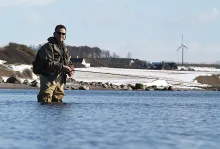
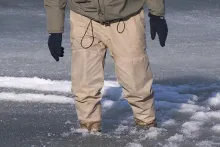
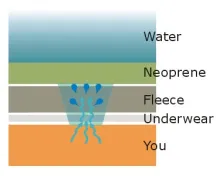
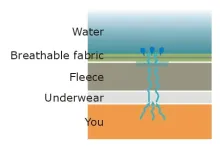
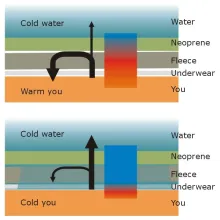

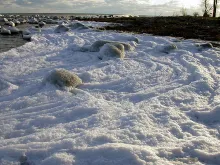
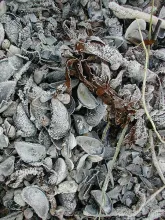
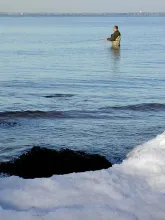
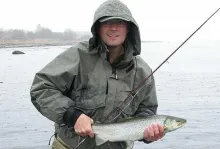




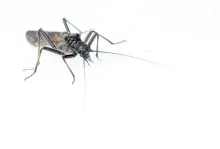

This Brian guy knows
This Brian guy knows what's up. Coming from a ski mountaineering background if you want to stay the warmest in cold conditions evaporation is your enemy not wetness. See the hardy alaskans that use vbl in their shoes, vests for backsweat from packs and sleeping bags when climbing big AK peaks. It is kind of an odd feeling having vbl on but as long as you have dry clothes to change into after you're done fishing the extra insulation from the neoprene will keep you warmer
I have done scuba di
I have done scuba diving for decades and the water temp where I live in Monterey, CA runs from 48-54 degrees throughout the year. My hands and feet would get cold until I invested in a drysuit that kept my body a lot wamer as my body was not having to warm up the 48 degree water that got inside my wetsuits by 50 degrees to my body temperature. The human body had natural mechanism to protect the core when it is too cold and that consists of shunting off the blood flow to the hands and feet and then the head. With the dry suit my core was warmer and so I had more blood flow to my hands and feet. Wearing same hood and gloves my hands and heat stayed warmer as a result of my core being warmer. Same applies to wading chest deep in cold water. Keep the core warmer and unless you are standing on ice your feet will stay much warmer.
Ray,
Cabelas is a
Ray,
Cabelas is a well known brand, and I know experienced anglers who swear by their jackets and waders, so if you find the price point good, I wouldn't hesitate if I were you.
Martin
I am looking at buy
I am looking at buying some breathable waders, I would like some advice about which brand to buy. I have been looking on the capella website , they seem to be a good compromise between qualities and price.
Any advices please.
Thanks.
Ray, fishing for trout down under (Australia)
I concure with the
I concure with the boot/bootie theroy. I have 4mm custom Streamlines w/builtin boots. The only times
my feet get cold is fishing out of a jetsled when it's so cold that the felt soles actually freeze to the boat deck. The problem I have with stockingfoot breathables is the size of the "bootie" is very restrictive. If you go for a summer fit (to one pair light/med sox) the wouldn't accomidate heavyer sox that are needed for winter without being tight and causing poor circulation, discomfort & really cold feet fast. I guess the best answer is breathable bootfoots.
I have a really high
I have a really high end pair of Browning 5 MM neoprenes I've owned for 15 yrs. They were a real blessing after years of vinyl and rubber waders, especially for duck hunting in the winter. However, I haven't worn them for the past 5 years or more, since I got a set of lightweight breathables. Mine are Cabela's midrange priced GII's, about $100. US. Admittedly, we havent had many really cold winters lately, but I've worn these when we were breaking 2 inches of ice to set up decoys,late winter in Idaho. I wear polyproplene from head to toe-sox, mid weight long johns, hat. Then I layer fleece over it. I make sure I don't overheat during the really physical parts of carrying gear in, setting up etc. And I DON"T GET COLD!
an important factor
an important factor is being overlooked in this neoprene versus breathable debate,weight.I have been wearing breathables for the last two seasons,previously i wore neoprene.neoprene is much than heavier than breathable material,that extra weight has to be carried by the angler leading to more sweating and fatigue.Thats a recipe for discomfort.
Having worn the same
Having worn the same pair of 5mm neoprene waders for nearly 15 yrs with only a few brush holes which i patched I was hesitant to give them up for breathables. I sent away to Cabelas for a pair, mostly for the guarantee but have been thinking about just spending $50 for a pair of 3 mm noprenes. The whole idea is how small they will or won't pack so my suitcase isn't just full of waders and boots. Any thoughts on light weight neoprene?
Martin,
My refere
Martin,
My reference material is not that extensive, but generally I have had little trouble with my breathable waders. I have had leaky ones, yes, and my experience says that 2-3 seasons is what it takes to break down a pair beyond repair. My own favorite brand is Scandinavian Vision - mostly because they fit me very well and are extremely comfortable. I have a couple of friends who use the same brand and are very happy. Another friend is a Simms man and has only used Simms breathables. He seems very pleased with those, and has had leaks, but only small pinhole ones, which could be easily repaired.
When my waders start failing, it's usually very severe: they will leak heavily in the crotch and around the ankles. It's my impression that this comes from a breakdown of the membrane, because usually I can't find any holes. I have also seen seams, which disintegrate, but generally that has no influence on the function of the waders.
My only complaint is that the waders don't last long enough. Buying new waders every second year is a bit tough on the wallet, when they are in the price range that breathables usually are.
Martin
I am a fishing write
I am a fishing writer and have a regular monthly column for wade fishermen. However, despite years of wading, I have NEVER found a good brand of breathable waders. It seems that after only about a season or so, they start springing MANY small leaks and I usually end up pitching or patching them. I am NOT hard on the waders and I only fish the flats and surf, so rock puctures are not the problem.
So, as a result of a lot of COLD and frustrating trips, I am trying to do a little research--trying to find the most durable pair AND one with a decent warranty. If I am going to recommend a pair to my readers, I need to feel that it will last. Any help or suggestions would be appreciated.
Martin Hafer
Bradenton, FL
Interesting discussi
Interesting discussion, this one. Breathables or neoprene or even old fashioned rubber waders are in my opinion mostly a matter of taste with respect to warmth, if you dress according to their advantages / disadvantages on the inside.
The key issue is the wading boots, since you rarely freeze your legs but almost always freeze your toes.
The boots should have sufficiently thick soles to keep the cold from the ground out. And they should be sufficiently stiff to keep the boot from collapsing during wading, so you loose the insulating layer of air around your feet.
Tight lines
Brian Larson is corr
Brian Larson is correct, gortex-type/breathable materials find it very hard to work when they are soaked. However, breathables do work better than neoprene in the extreme cold. Why? Because the "technical-clothing" paradigm relies on layers whereas neoprene wearers rarely employ this tactic. Using baggy beathables with a set of silk/cotton draws, a thermal liner and loosed fitting underwear makes for unbeatable insulation against the cold - and you don't get damp (as you do in neoprene) because the layers wick the moisture away from your skin - and that is the secret to day-long wading in the cold.
I do, however, believe that at the end of the day it comes down to personal choice - and my choice is breathables - ALL YEAR ROUND!
Unless you are in ve
Unless you are in very hot water, the condensation point of the vapor will be less than the temperature of the water. The vapor will condense as it cools, once condensed it can not travel through the membrane. Ther may be some minor thing happening under the conditions, which occure most of the time that keep the vapor from escaping, but I don't know of them. I also must sweat way more than most becasue I have never had dry cloths inside my waders regardless of what type I use. In warm weather I can usually ring water out of my socks. Tightness of the waders will also make a big difference. With the right cloths while xcountry skiing I have steped into a stream while crossing and never gotten uncomprotabe during the balance of the trip even though the inside was soaked and the outside became frozen. I have also collected a half inch of ice crystals between the shell on the outside and the last inside garment.
Brian,
You may be
Brian,
You may be right in your considerations regarding breathability and its limitations. I have no scientific evidence to prove the opposite. But I have fished in the winter as long as I remember and I have worn the right clothes under my neoprenes. My empiric findings were:
- My waders were always moist on the inside after a day's fishing (wet, actually)
- My clothes were damp, particularly over the knees
- I froze
I have worn 5 mm Orvis and Bare neoprenes - the latter being regarded top notch by most people I know.
Being out on extremely cold days doesn't make me more moist. It might be because I sweat less. On sunny summer days sweat runs off me in litres and my breathable waders are again moist on the inside. My (again empiric) experience tells me that the colder it is the dryer I am.
And regarding the breathability under water. What would hinder the vapor in "fusing" with the outside water? Not being a physicist I can't explain or fully understand the molocular details in this process.
No matter what: I freeze less than ever and so does most of my fishing buddies. And none of us ever wear neoprenes anymore. And yes: we do fish in the winter!
Martin
The breathable myth
The breathable myth is that breathable waders and jackets always breath. They can not breath if they are wet on the outside such as when you are in the water or when it is raining and the outside of the jacket is soaking wet. They also don't breath when it is colder outside than what the condensation point of the sweat vapor is. The vapor will condense as soon as it reaches this temperature inside the wader. I think that you are staying warmer, not because of the waders, but because of the choice of cloths you are making inside the waders. Wicking materials next to the skin and good insulators outside that. You would be just as warn if not warmer in neoprenes.
Winter Waders
As an avid steelheader I have tried them all. Insulated boot foot breathables from Cabela's waterfowl selection are hands down the best. Yes, a tad less ankle support but the trade off for all day warmth is more than worth it. For about $200 you can't go wrong.